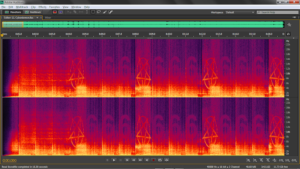2016’s hellish shooter “Doom” is a game that knows what it is: a ludicrous, blood-pumping ride that puts the player in control of a demon-slaying/crushing/tearing/ripping/pounding juggernaut. I can say with sheer certainty that “Doom” is one of the very rare games that left my heart pounding minutes after each demon swarm. It was worth all the time and effort of its nightmarish nine-year production. This is truly a game that values gameplay over story.
That’s not to say the story is undercooked. Far from it; the story is very well-established with likable characters, an intriguing backstory, and a beautiful Mars landscape. Rather, it’s the player-character named Doomslayer that doesn’t care about the story. After being explained the circumstances that brought the planet to ruin, rather than agreeing to the other person’s terms and choosing to help them, Doomslayer’s only response is smashing their communications, pumping his shotgun, and entering the doomed world. All you need to know is that hordes of demons are taking over, you have guns, and… well, you can probably imagine the rest. Again, it values raw gameplay and replayability over story. And it just works. No health regeneration, just health pick-ups. Low on ammo? Just chainsaw an enemy. Why do enemies drop ammo when chainsawed? Because that’s how video games work.
2020’s “Doom: Eternal” is an improvement in nearly every way. It creates more emphasis on the story than its predecessor, but the core gameplay is still there and polished more than ever. To avoid any specifics about the story, I will instead focus on the gameplay, which I’m sure most people are more interested in. It’s roughly the same, minus the abundance of ammunition and more focus on platforming. But do not fear the scarcity of ammo this time, as the game still grants you more and more methods of taking down hordes of demons. Light demons on fire and you’ll gain Armor. Shoot grenades into a Cacodemon’s mouth and it’ll be stunned and left open for a kill. Shoot off the rocket launchers from a Revenant and it’ll be left nearly defenseless. There’s so much enemy variety and ways to take them down, to the point where about every enemy is like a puzzle, allowing the player to decide on how to take them down. It’s pure adrenaline like no other while still adding complexity to ensure it’s not just mindless fun.
Let’s bring it all back to the crown jewel of these games. The element that gives this era of “Doom” it’s edgy and macabre personality: the music score. Composer Mick Gordon’s blend of death metal and synth adds a whole new dimension of chaos and terror. The production is astounding, showing the importance of a solid production. The score contains fairly simplistic guitar riffs, but are done so heavily that it adds so much fuel to the game. I cannot imagine either “Doom” title without Gordon’s involvement.
 Hell, any composer who goes out of their way to include pentagrams and 666 into one of his track’s waveforms is a king who is clearly passionate about their work.
Hell, any composer who goes out of their way to include pentagrams and 666 into one of his track’s waveforms is a king who is clearly passionate about their work.
Since the success of games like “Doom” and “Overwatch,” we’ve reached a decline in modern war shooters. Gone are the days of military games over-saturating the market. Now the shooter audience wants something fresh, something new, something to bite into. 2016’s “Doom” was a complete game-changer, and “Eternal” is a worthy, exciting follow-up that I just cannot put down. Both are truly something special.


Leave a Reply